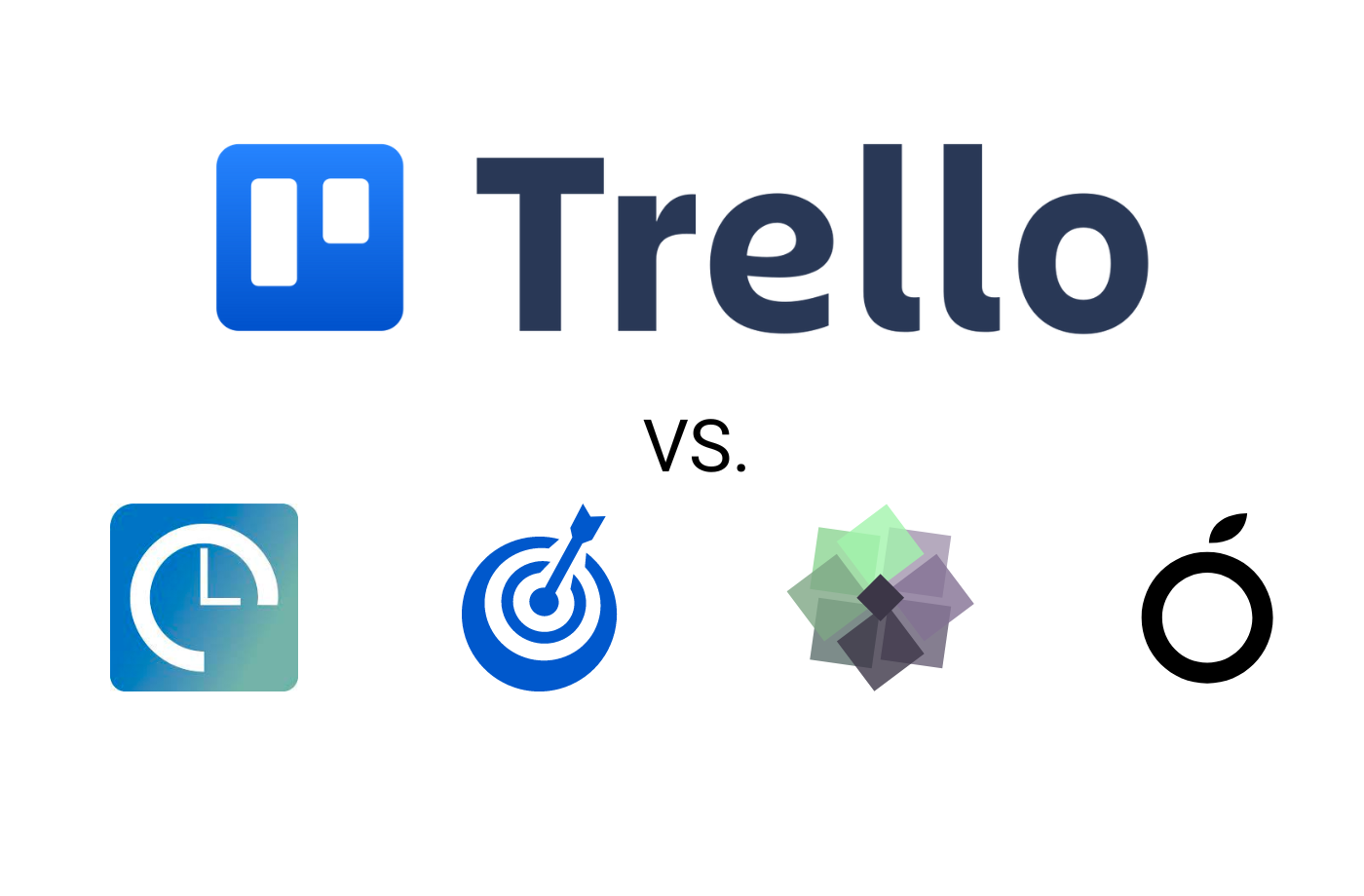Estimated reading time: 10 minutes
Ever wish you had a Trello-like project management tool with way more affordable pricing, open-source nature, and a decent bench of features?
And aiming for that to decrease your costs while staying flexible with self-hosted options and customization capabilities? This guide’s got you covered.
Leantime, Focalboard, Taiga, and OrangeScrum systems are among the best Trello open-source alternatives that are worth picking.
Keep reading the post to know the pros and cons, features, pricing, customizations, and other criteria that matter while picking a Trello alternative.
Table of contents
Open-Source Alternatives to Trello: Cheatsheet
Before going through a head-to-head comparison, here’s a cheat sheet matrix for a quick overview of each.
| Trello vs Leantime vs Focalboard vs Taiga vs OrangeScrum | |||||
| Trello | Leantime | Focalboard | Taiga | OrangeScrum | |
| Easy for non-project-managers | ❌ | ✅ | ❌ | ❌ | ❌ |
| Industry-agnostic | ✅ | ✅ | ❌ | ✅ | ✅ |
| Project-based pricing | ❌ | ✅ | ❌ | ❌ | ❌ |
| Secure on-premise install | ❌ | ✅ | ✅ | ✅ | ✅ |
| Goal management | ✅ | ✅ | ❌ | ❌ | ❌ |
| Highly customizable | ✅ | ✅ | ❌ | ✅ | ✅ |
| White Labeling | ❌ | ✅ | ❌ | ❌ | ❌ |
| Built-in retrospectives | ✅ | ✅ | ❌ | ❌ | ❌ |
| High security & privacy | ✅ | ✅ | ✅ | ✅ | ✅ |
| Data ownership | ❌ | ✅ | ✅ | ✅ | ✅ |
| Multiple Project Views | ✅ | ✅ | ✅ | ✅ | ✅ |
| Native Time Tracking | ❌ | ✅ | ✅ | ❌ | ✅ |
| Automations | ✅ | ✅ | ✅ | ✅ | ✅ |
| Idea Management | ❌ | ✅ | ❌ | ❌ | ❌ |
| Integrations | ✅ | ✅ | ✅ | ✅ | ✅ |
Trello Alternatives
Below, we’ll comprehensively summarize Trello alternatives, exploring their unique features, pricing structures, and real-world performance. Whether seeking more flexibility, enhanced collaboration, or cost-effective solutions, our analysis aims to guide you toward the ideal Trello alternative that aligns with your project management preferences.
Leantime.io
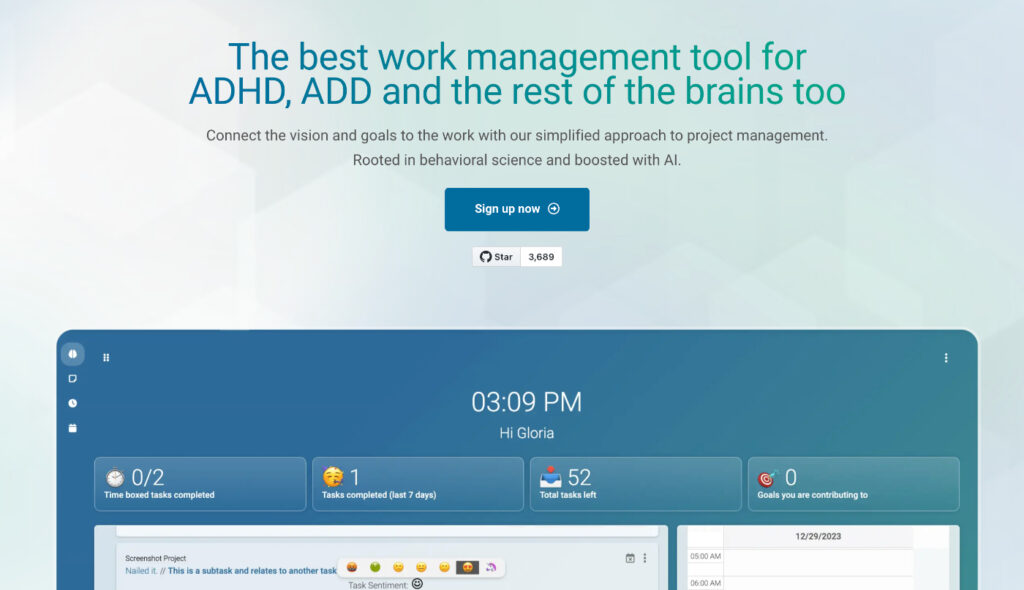
A no-brainer management tool for entrepreneurial teams.
Pricing: Self-Hosted (Free) / $2 per credit (Credits buy user seats, projects and in the future plugins and related AI usage)
G2 Rating: 4.5
Released: 2018
Established by ex-Google pros with mature expertise, Leantime.io is a worth-peak open-source Trello alternative trusted by TechStars StartupWeekend, Equiptal, and Netzwerk. The platform’s founders aimed to democratize the world of getting things done by releasing a no-brainer software helping you manage projects and not just tickets.
With the pain points you’d expect based on their purpose, Leantime.io is designed for non-project-managers busy getting the work done and having no PMP or MBA certifications.
Great Option For:
Easily manage, track, and grow. They also focus on supporting users with ADHD and ADD.
Offering many of the same features as Trello, Leantime.io goes the extra mile with intuitive user interfaces, well-known project views, no steep learning curves, and zero overwhelming scenarios.
More than that, the platform enables you to self-host the system, thus ensuring premium security and on-demand customizations. Ever faced a frustrating and long-run installation procedure? No more. The Leantime’s on-premise setup will take less than 1 hour and require a little technical background.
Welcome to the Wonderful World of Open Source Project Management!
Just get the latest release package, carry out an empty MySQL database, point out the domain to /public directory, fill in credentials, and start getting things done with intuitive instructions.
With less daunting experiences than Jira and more advanced features than Trello, Leantime’s core functions include:
Project Blueprint
Ever got frustrated by jumping between multiple tabs to find the board, Gantts, or to-dos and wanting to have them centralized? Leantime’s project blueprint feature is what you need, as it offers an all-in-one dashboard with empathy boards, strengths and weaknesses, goal management, and all project and strategy-related data.
Idea Boards
Ever wish you had a chance to store your thoughts and ideas in one place with your project management tools? Here comes an Idea Board function enabling you to store, analyze, and transform light-bulb moments into research tasks and milestones.
Milestones & Gantt Charts
Have you ever been confused with no interoperability to track the project’s roadmap? At Leantime, we’ve struggled with that issue multiple times, making us release an intuitive milestone management feature. Now, it helps you visualize goals with Gantts and generate data-driven insights for the roadmap.
Built-In Retrospectives
Ever felt puzzled by purchasing countless third-party services to analyze project bottlenecks and outcomes while using Trello? Built-in retrospectives make it cost- and time-effective to analyze, track, and attach milestones in one place.
Leantime Features
In total, the core features of Leantime include:
- Multiple Task Views
- Time Tracking
- Project Dashboard
- Built-in Retrospectives
- Role Management
- White Labeling
- Status Updates and Discussions
- Calendar Integration
- Branded Subdomain
- Idea Management
- Reports with Export & Print
- Goal Management
- SWOT, Empathy map, Lean Canvas+
- Gantt Charts & Milestones
- Many others.
Focalboard (Mattermost Boards)
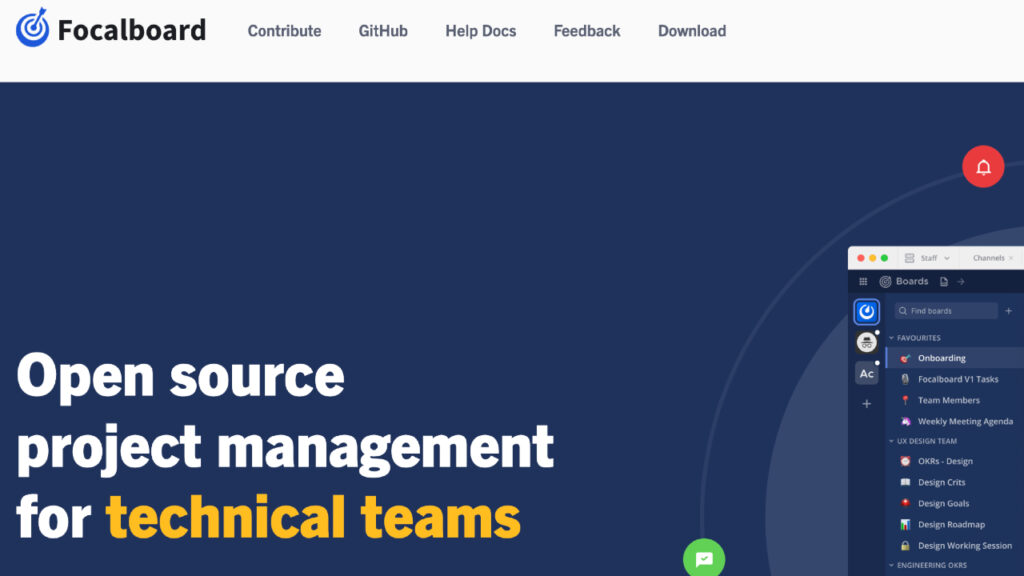
Pricing: Personal Edition (free) / Personal Server (custom quote)
G2 Rating: N/A
Released: 2012
Founded in 2020 by Ian Tien, CEO of Mattermost, Focalboard is a project management tool designed as an open-source alternative to Trello. Ian’s goal was to deliver a way more flexible and customizable productivity platform offering a tailored approach to each technical team and organization.
Trusted by Samsung, Qualcomm, NASA, and Nasdaq, the tool is built on Mattermost’s codebase, providing the same performance, security, and reliability features.
Mostly focused on technical teams, the system is claimed to accelerate productivity (centralized dashboards), organize your work (multiple board views), streamline collaboration (real-time messaging), and get you covered with any template you may need.
Focalboard Pros
- Customizable workspace: create a workspace that suits your specific needs with multiple pre-built templates or design self-made board views, lists, and cards.
- Collaborative features: Focalboard allows users to collaborate with others on projects and tasks. Users can assign tasks to team members, leave comments, and share files.
- Powerful integration: sync your project management hub with Trello, Google Drive, GitLab, Jenkins, and ZenDesk, making it easy to import data and collaborate with others.
Focalboard Cons
- Steep learning curve
- Limited functionality
- Limited mobile support
- Limited community support.
Focalboard Core Features
- Kanban-based interface
- Seamless drag-n-drop
- Table view
- Full control over cards
- Drag-n-drop cards
- Duplicate cards and boards
- Multiple board support
- Notes
- Board and task filters
- Search with full-text search support
- Group tasks by author, date, type, and category
- Tags
- Comments
- Board groups
- Others.
Taiga
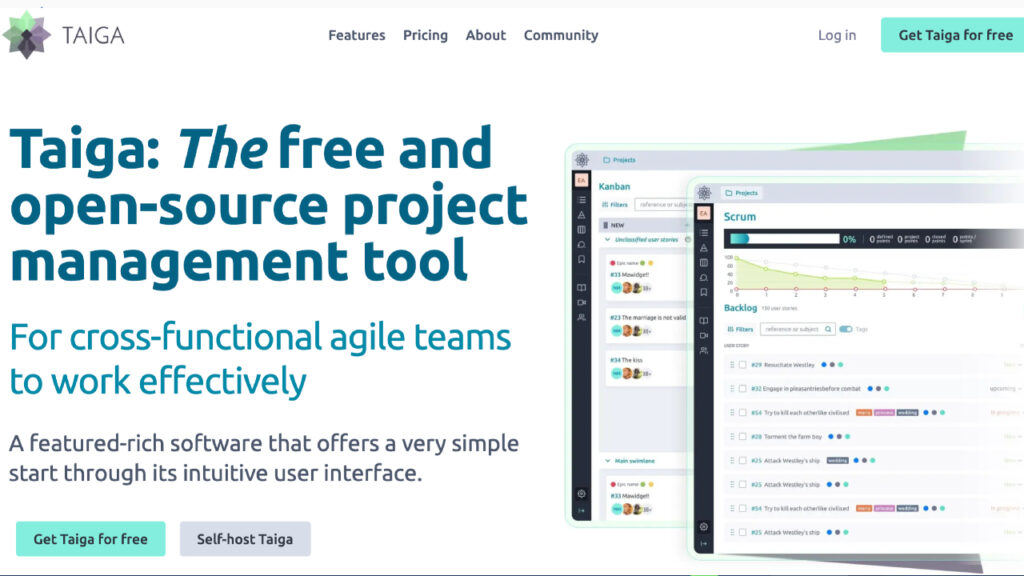
Pricing: Free / Taiga Cloud ($70/project/mo), Self-Hosted (Fre)
G2 Rating: 4.4
Released: 2014
Taiga.io is an open-source Trello alternative designed to change the way teams visualize Agile methodologies. Since its inception in 2014, Taiga.io has become a go-to platform for many well-known companies, including Red Hat, Orange, Airbus, HP, and Coldminds.
Designed for cross-functional teams that follow agile principles, Taiga.io provides users with a range of collaboration aids, including native discussion boards, integrated chat, and email notifications. These features enable teams to stay in sync and collaborate more effectively, regardless of their physical location.
One of Taiga.io’s standout features is its straight forward interface, which simplifies task management with both Scrum and Kanban views. This enables teams to replicate workflows easily, saving them a lot of time and effort in managing and communicating with both teams and customers.
Taiga.io has also implemented a color-coding feature for project tasks in Kanban and burndown in the Scrum setting. This allows teams to manage multiple products and projects effortlessly, making it an ideal solution for organizations looking to manage complex projects with multiple teams.
The platform’s integration infrastructure is another strength, as it offers seamless integration with popular tools like Trello, Asana, Jira, GitLab, BitBucket, and Zapier. This allows syncing with third-party services in a convenient and customizable manner.
On the flip side, Taiga.io’s pricing system seems challenging for some customers, as it goes through a member-based model. If you need to assign multiple users, such as QA engineers or client team members, think of costs as a potential roadblock. Also, Taiga does nothing with feature-based pricing, so it’s essential to analyze your team composition before starting.
Some customers report they find the platform’s integrations mediocre, with steep and clunky customizations and no time tracking out of the box. This makes Taiga.io a less functional Trello alternative compared to other open-source tools like Leantime and Focalboard.
Another challenge customers face is that Google SSO is not a native experience. This will force you to look for third-party plugins to evade error-prone scenarios.
Finally, Taiga.io’s project reporting functionalities are rudimentary, and there are no built-in filters or custom attributes to extract meaningful data, making it a cumbersome experience. If you’re still considering Taiga.io, it’s essential to ensure that you have an outside report builder with customizable attributes and filters to extract useful data.
Taiga pros:
- Super intuitive user interfaces
- Minimal learning curve
- Cross-team collaboration
- Advanced Kanban and Scrum features
- Effective resource bandwidth management with Agile
Taiga Cons:
- Error-prone and non-polished integrations
- Costly pricing for large teams
- No native SSO
- Mediocre project reporting.
OrangeScrum
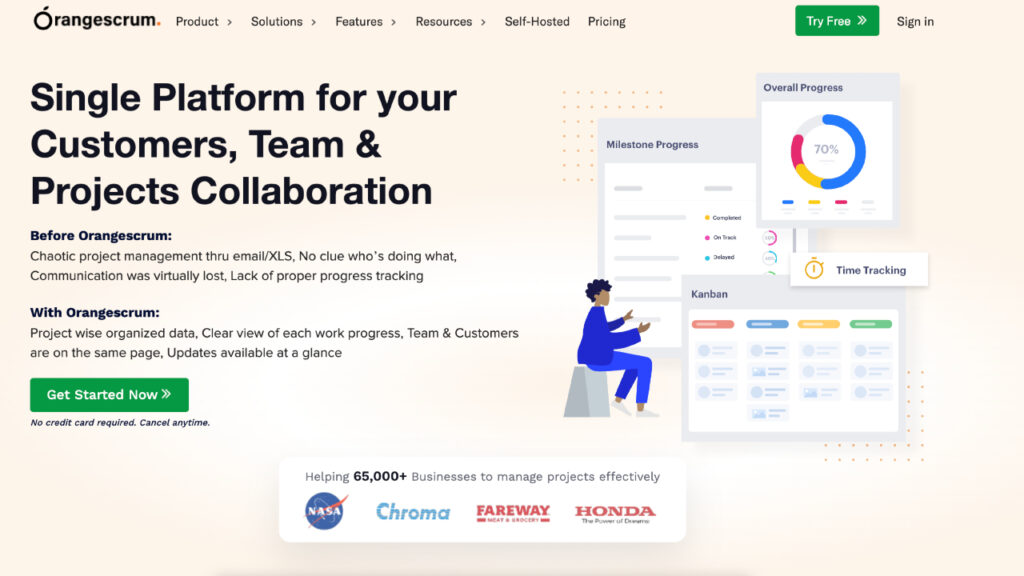
SaaS Pricing: Free (up to 3 users) / Startup ($9 per 10 users per mo) / Professional ($4/user/mo from 11 users) / Enterprise (custom quote)
On-Premise Pricing: $4,425 (25 users) / $7,794 (50 users) / $15,300 (100 users) / $26,376 (200 users) + $199 for installation support (optional)
G2 Rating: 4.5
Released: 2011
OrangeScrum is an open-source project management software with both on-premise and SaaS-based models. Released in 2011 by AndolaSoft, a software development company based in the US, the system’s founders originally tried to meet their clients’ needs – chaotic and non-centralized project management and collaboration.
First off, the team launched EasyAgile – a web-based task and time management tool, but most users faced a lack of features and flexibility. Next, AndolaSoft was pushed to ideate and find ways of advancing its product.
This is how OrangeScrum originated and started attracting dozens of SMBs and enterprise-level orgs like Ford Otosan, SAP, and Honda on board.
Since 2011, the team has fueled OrangeScrum with multiple features making it an all-around system for professional services, IT, marketing, remote, and creative teams.
Orangescrum Strengths
Claimed to be an open-source Trello alternative, the project management tool’s strengths are:
- Feature-rich functionality in one place: task management, Kanban view, time tracking, timesheet, resource management, reports & analytics, project calendar, bug and issue tracking, workload management, custom task status, user role management, etc.
- Self-hosted customization perks: customers report having a bench of customization opportunities while installing the product locally.
- Self-explanatory user interface: a gamified onboarding and multiple built-in instructions simplify how customers master the system’s UI, thus lowering the learning curve and cutting onboarding costs.
Orangescrum Downsides
- Features that “don’t work as expected”: customers get frustrated with some functions like reporting, forecasting, recurring tasks, and others that don’t work as expected or even return 404 messages.
- Overwhelming navigation flows: users report being confused by most built-in dashboards that overcomplicate project management due to a high number of extra features that lead to a clunky experience.
“Not-that-high” performance & periodic downtimes: customers conclude to have some performance issues with stuttering screen loadings and delays. Alongside, some users reported experiencing downtimes.
Conclusion
Whether you’re looking for a free open source alternative to Trello or just an open source alternative, no matter the reason, there are options to meet the needs you and your work have. We hope this information helps you make the best decision. With these four in mind, there are features for everyone.
Other articles you may be interested in:


